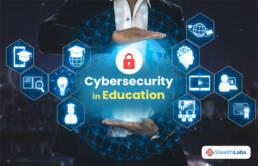Cybersecurity in Educational Institutions: Protecting Student Data and Academic Integrity
In today’s digital age,cybersecurity in educational institutions has become a paramount concern. With schools and universities increasingly adopting online platforms,safeguarding sensitive data — including student records,research data,and academic processes — is more crucial than ever.This complete guide explores the challenges, practical strategies, and benefits of implementing robust cybersecurity measures to protect student data and uphold academic integrity.
Why Cybersecurity Matters in Education
Educational institutions house a treasure trove of personal and academic data. From enrollment details and transcripts to health information and financial records, this data is a tempting target for cybercriminals. Not only do breaches compromise student privacy, but threats like plagiarism, exam cheats, and data manipulation also put academic integrity at risk.
- legal obligations: Compliance with regulations such as FERPA, GDPR, and COPPA is mandatory.
- Reputation management: Data breaches can seriously damage an institution’s reputation.
- Financial impact: Recovering from cyberattacks can be costly — both in direct losses and long-term trust issues.
Key Cybersecurity Threats in Educational institutions
The digital transformation in education has opened new avenues for cyber threats. Some common cybersecurity risks faced by schools and universities include:
- Phishing Attacks: Deceptive emails and fake login pages targeting students, staff, and faculty.
- Ransomware: Malicious software that locks systems or data until a ransom is paid.
- Malware and Viruses: Infecting devices to steal,damage,or manipulate information.
- data Breaches: Unauthorized access to sensitive student and employee records.
- Social Engineering: Manipulating individuals into revealing credentials or confidential details.
- Unauthorized Access: Former students or staff exploiting inactive accounts or poor access controls.
- Academic Fraud: Plagiarism tools, paper mills, and software that enable cheating and undermine academic standards.
Strategies to Protect Student Data and Academic Integrity
Proactive cybersecurity measures are essential to safeguard sensitive educational data.Below are best practices that schools, colleges, and universities should consider:
- multi-factor Authentication (MFA): Require MFA for email, learning management systems, and data portals.
- data Encryption: Encrypt data both at rest and in transit to prevent unauthorized interception.
- User Training and Awareness: Regularly educate students, faculty, and staff on identifying phishing attempts and practicing online safety.
- Regular Software Updates: Keep all systems and applications patched to mitigate vulnerabilities.
- access Controls: Implement role-based access to limit data exposure to only those who need it.
- Incident Response Plan: Establish and routinely test procedures for detecting, reporting, and recovering from security incidents.
- Plagiarism and Cheating Detection Tools: Utilize academic integrity software to detect and prevent dishonest practices.
- Secure Backups: Maintain encrypted, off-site backups for rapid recovery in case of a cyberattack.
Benefits of Effective Cybersecurity in Education
Investing in cybersecurity measures offers numerous advantages beyond mere compliance:
- Safe Learning Habitat: Students and staff can focus on learning instead of worrying about data safety.
- Preservation of Academic Integrity: Protects against cheating,falsification of records,and research theft.
- Enhanced Institutional Reputation: Trust from parents, alumni, and funding agencies increases when data protection is prioritized.
- Reduced Financial Losses: Prevents costly breaches and associated downtimes.
- Compliance: Adherence to local, national, and international data privacy regulations.
Case Studies: Real-World Cybersecurity Incidents in Education
Understanding the real-world consequences of cyberattacks in education is crucial. Here are two noteworthy case studies:
case study 1: Ransomware Attack on a School District
In 2021, a U.S.school district suffered a ransomware attack that encrypted thousands of files, disrupted virtual learning, and led to the temporary closure of schools. Sensitive student and employee data was stolen,leading to meaningful financial and reputational damage.
Case Study 2: Data Breach at a Major University
A prominent university fell victim to a data breach when attackers exploited a vulnerability in a third-party software system. The breach exposed personal information, including Social Security Numbers and research data, affecting thousands of students and faculty members. The incident highlighted the need for continuous security assessments and third-party management.
First-Hand Experience: A Cybersecurity Officer’s Viewpoint
“Cybersecurity is not just an IT concern — it’s an institutional priority.”
— Jane Patel, Chief Information Security Officer, Midwest University
“We implemented mandatory cybersecurity awareness programs and found a 70% decrease in successful phishing attempts among faculty. Layering security measures, conducting regular audits, and collaborating with students helped us create a culture of vigilance.”
Practical Tips: How to improve Cybersecurity in Your School or University
Even small changes can make a significant difference. Here are actionable tips to bolster cybersecurity in educational environments:
- Perform regular security audits to identify vulnerabilities before they are exploited.
- Enable strong password policies and encourage the use of password managers.
- Restrict personal devices from accessing sensitive systems unless they meet security standards.
- Appoint a cybersecurity officer or create a security committee to oversee data protection strategies.
- Use encrypted communications for sharing student records or confidential academic content.
- Foster a culture of digital citizenship by teaching students about responsible online behavior and privacy.
Conclusion
As educational technology evolves, so must the approaches to protecting student data and ensuring academic integrity.By understanding the risks and implementing comprehensive cybersecurity strategies, schools and universities can foster safe, trustworthy environments for learning and research. Prioritizing cybersecurity in educational institutions benefits not only compliance efforts but also the core mission of education: nurturing the next generation of learned, responsible citizens.
Frequently Asked Questions about Cybersecurity in Educational Institutions
- Why is cybersecurity critically important in educational institutions?
- Educational institutions store vast amounts of sensitive information which, if compromised, can have serious consequences for students, staff, and the institution’s reputation.
- What is academic integrity, and how does cybersecurity support it?
- Academic integrity refers to honesty and fairness in scholarly work. cybersecurity helps prevent activities like cheating, plagiarism, and data tampering.
- How can students contribute to cybersecurity?
- By practicing safe online behaviors, using strong passwords, reporting suspicious activity, and respecting data privacy procedures outlined by the institution.

